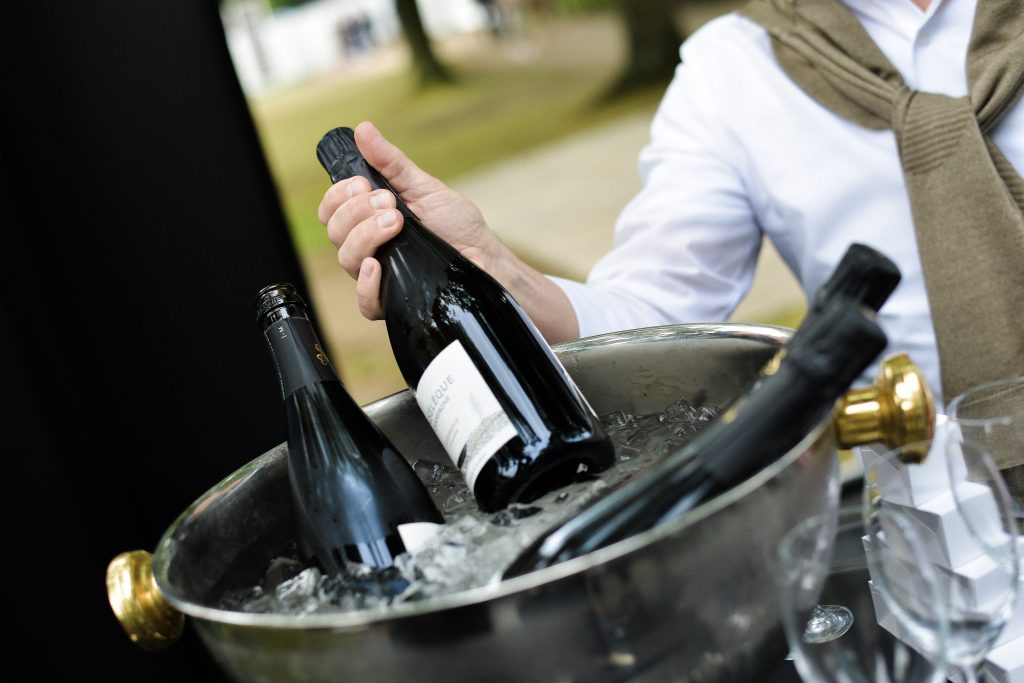
Not like most Bordeaux winemakers, intriguing, the Chateau Leoville Barton has, for the most part, no chateau. The wines are produced and manufactured at their sister wine property called Chateau Langoa Barton, which it owns a part of their ownership.
The Barton family partnered or worked together with the Guestier family, another powerful Bordeaux family. The two families worked together and created an extremely and massively successful Bordeaux négociant company.
In this post, you will learn more about Chateau Leoville Barton St. Julien Second Growth with food pairing tips and wine tasting notes. So, keep reading!
The Modern Era of the Chateau Leoville Barton
Tradition has, believe it or not, always stayed important and crucial at Leoville Barton. When the Barton family, specifically Ronald Barton, took over the management of the Left Bank estate, he didn’t have confidence in any contemporary winemaking technology.
Although the wines of Leoville Barton are, in numerous ways, more conventional than most wine company, they are still famous for that reason. Another reason is that the estates fair pricing policy that didn’t become really expensive and costly until the 2005 vintage.
Succeeding Ronald Barton, Anthony Barton managed the Saint Julien estate in 1983. After a few years, Anthony refurbished and restored the cellars, keeping the traditional, large, wood, oak, fermentation vats. Following Anthony, Lilian Baron took over the vineyard.
In 2011, the Barton family bought and acquired an additional Bordeaux estate, which is the Chateau Mauvesin in Moulis. Then the Barton family replaced the name to indicate their new ownership. Now, it is called Chateau Mauvesin Barton.
Grapes
The St. Julien vineyard (47 hectares) of Leoville Barton is planted three percent Cabernet Franc, twenty-three percent Merlot, and seventy-four percent Cabernet Sauvignon. This varietal combination shows a boost in Merlot plantings, from what was initially planted over the past years.
Moreover, the quantity of Cabernet Franc in the Chateau Leoville Barton Vineyard is continually reduced. The terrior of the Chateau Leoville Barton Vineyard is mostly gravel with a hint of clay underneath.
The vines have an average age of thirty years and are located on both sides of the D2 road. But there are also some portions with older grapes, such as sixty years of age Merlot vines. The Chateau Leoville Barton vineyard is planted to a grapevine density of nine thousand vines per hectare.
Of course, the style of Chateau Leoville Barton is different compared to what you will experience in their sister company. A considerable part of that is because of their location and vineyards in the Saint Julien appellation.
The grapevines for Leoville Barton are located north of Langoa Barton, and west of the chateau. Those vines enjoy and relish a warmer terrior with more direct sunlight. It’s quintessential to take note that Chateau Leoville Barton doesn’t do the green harvest. As an alternative, they depend on pruning to produce yields.
Winemaking
To make or produce the Leoville Barton wine, vinification or the conversion of grape juice or other vegetable extracts into wine by fermentation occur at Chateau Langoa Barton. The wines are, for the most part, conventionally made with vinification in a two hundred hectoliter wooden vats. The vats range in age dating back to 1963.
For the vinification process, Leoville Barton prefers the method of co-inoculation, meaning the malolactic and alcoholic fermentation occurs at the same time. The Leoville Barton wine is aged in an average of fifty percent French, new oak barrels for about twenty months. Generally, Chateau Leoville Barton produces about twenty thousand cases of Bordeaux wine every year.
Best Vintages
The best vintages are 1961, 1985, 1990, 2000, 2003, 2005, 2009, 2010, 2012, 2014, 2015, 2016, 2017, and 2018. Leoville Barton wines are wines that aged really well.
Style and Character
Leoville Barton is a structured, sturdy Bordeaux wine with tannin that needs some time to develop. Masculine, traditional, and beefy in style, the Leoville Barton is famous with some wine collectors due to the reasonable and affordable prices the estate charges for the wines. And because of the high levels of tannins and wine style, the best Leoville Barton wine vintages usually require years of age, before consuming well.
Takeaway
The wines of Leoville Barton are, for the most part, best served or consumed at 60 degrees Fahrenheit or 15.5 degrees Celsius. This almost wine cellar temp allows the wine to have more lift and be fresher. You can pair it with grilled dishes, braised dishes, roasted, roast chicken, duck, lamb, beef, pork, and veal.
Moreover, Leoville Barton wines are also great with Asian dishes, kinds of pasta, mushrooms, and fish courses, as well as cheese. The wines offer its premium drinking and must reach or achieve peak maturity between fifteen and thirty years of age after the vintage.
